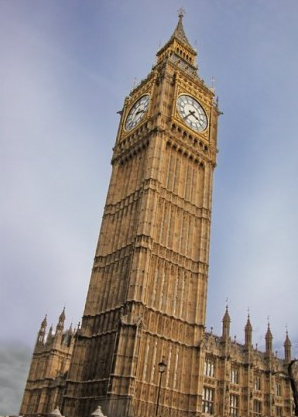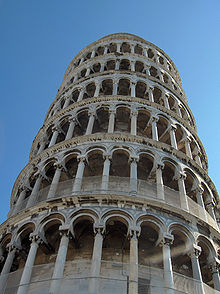Leaning Out
 |
 |
Pictured above is the Elizabeth Tower, home of the famous clock bell, Big Ben. On the left, the angle of the photograph makes it look like the tower is leaning to the right. And in the picture on the right, the tower appears to be leaning to the right even more so. The higher you go up the tower, the more pronounced the deviation in the lean.
Or so it seems. In reality, the two towers are leaning the exact same amount — guaranteed by the fact that the two photos are actually the same photo, just repeated a second time. The illusion works for any pair of identical images where the object appears to get further away as our view of it progresses. And of course, it works for the Leaning Tower of Pisa as well, as seen below.
 |
 |
What’s going on here? It’s a great example of our brains outsmarting ourselves, as described in a paper by three researchers at McGill University (pdf here, which contains a photo of tram lines, when paired, which makes the effect absolutely astounding). When we look up at parallel buildings — say, while standing on a Manhattan street corner — the buildings seem to converge as they reach toward the sky. However, our brains realize that this is just the view from our immediate perspective, so it corrects the image and “returns” them to their true, parallel state.
But when the buildings are parallel and do not seem to converge — and note that the leaning towers above do not seem to do that — our brains still issue this “correction,” and bend them apart. But without the perceived convergence, the images instead appear to diverge. All because our minds can’t always trust what our eyes believe to see.
Bonus fact: Big Ben’s tower is, in fact, leaning. According to Reuters, at its peak, the clock tower leans leftward about 46 centimeters (about a foot and a half). But don’t worry about it turning into another situation like the Leaning Tower of Pisa. Reuters estimates that it’d take 10,000 years for that to happen.
From the Archives: Temporary Blindness: Another way our minds trick us into not seeing something which our eyes otherwise detect. Also, the self-explanatory Why Pisa’s Tower Leans.
Related: A Leaning Tower of Pisa 3-D puzzle.
Thanks to Futility Closet for teaching me about the illusion and to Richard Wiseman to the Elizabeth Tower/Big Ben photo.

Leave a comment